The choice of a specific Bokken for Aikido
And how it influences the Aikido practice
A few months ago, I wrote a post about weapons from the perspective of traditional craftsmanship. Today, I would like to continue talking about those weapons, but with a different perspective: what consequences the choice of a Bokken can have on your training.
I will not allow myself to give any advice. I am a practitioner myself, I made my own choices and I stick to them. But I would like to share here the observations I made through my humble training experience, but more importantly based on my rather vast knowledge of those weapons and how they are designed. our teacher’s advices and choices are indisputable and my observations are, indeed, only a personal point of view. Needless to say, I have trained at least a few hours with each and every weapons mentioned in this article.

From top to bottom: Keishi Ryu, Iwama Ryu, Jiki Shinkage Ryu.
Studying (with) Bokken.
Most beginners start their Budo journey with a "standard" Bokken, i.e. a red or white oak, 101.5 cm long weapon that weighs about 500 ~ 600g.
This “standard” Bokken was actually designed for studying the Kendo Kata. It comes with a Tsuba (guard), and it is standardised so that each practitioner uses a sword of the same length (in order to maintain the same basic interval - Maai - when performing each form).
This model is good enough for a majority of Aikido practitioners. It is sturdy (if made in Japan), relatively light and suits both full contact - Uchiai - and no contact trainings.
Be that as it may, most sword traditions, the famous Koryu / Kobudo schools, have opted for Bokken specifically tailored to their practice.

Four superior red oak Bokken from Japan's last four workshops: Nidome, Aramaki, Horinouchi and Matsuzaki (top to bottom).
In reality, the standardisation of weapons came mainly during the Meiji era. At that time, Japan’s army underwent a rapid unification and modernisation, following Western models (mainly French, English and German).
Training equipment needed to be standardised for mass production, and most importantly, in order to harmonise the different technical curricula. Martial art pedagogy evolved from a one-to-one master / disciple relationship to a mass education system.
"Standardisation" does also imply that the "standard" tool needs to suit the majority of practitioners. One may argue however that choosing a non-standard weapon when our morphology is far different from the average makes more sense. Indeed it does, from a purely logical / practical, and a historical point of view.
Thin / light Bokken
Light / thin Bokken are favoured by traditions that focus on duels and on combat against several types of weapons (sword against Naginata, Yari, etc.). This is the case with, to name a few, Jiki Shinkage Ryu Naginata, Yagyu Shinkage Ryu (which “last” notable reform focussed on light armoured combat and civilian duel that require rapid movement, sacrificing at the same time the power needed to cut through / pierce an armour), Niten Ichi Ryu (Miyamoto Musashi’s school, a two-sword style that requires light weapons that can be wielded single-handed), etc.
Light Bokken are great to work on speed and precision. Contrary to what people usually think, it is very difficult to be precise with a lighter weapon: any interference during a cut affects the blade’s behaviour directly. On the other hand, light Bokken don’t have much striking power and they are not suitable for physical reinforcement (Tanren).

Three thin Bokken from the Aramaki workshop. From top to bottom: Yagyu Shinkage Ryu, Jiki Shinkage Ryu Naginata and Yagyu Ryu.
The Aikido Founder, Ueshiba Morihei, used to practise (during his last years) with a light Bokken. We do not know exactly what model he used, and if it still exists, but it was undoubtedly a thin weapon with a fairly small curvature. In France, Tamura Nobuyoshi sensei also used a light Bokken. Thin Bokken allow to practise the “Ki no nagare” (fluidity, based on movement accuracy and timing).
Heavy bokkens
Heavy Bokken are generally used by schools which focus their practice on heavy armoured combat and / or physical resistance. Traditions like Jiki Shinkage Ryu Kenjutsu (different from the Naginata line) or Kashima Shinto Ryu have opted for very heavy Bokken. Their students trained to be ready for the battlefield of the Muromachi / Sengoku periods.
Heavy Bokken aim at replicating the handling of heavy plain swords (non grooved blades). Those weapons were very powerful and could damage the strongest armours of that time.
Heavy Bokken can develop hip power, arm / forearm strength and strong grip. They can however lead to self-inflicted injuries, especially back injuries when over-training. They also do not allow to work on speed, precision or body placement. Aikido practitioners would say that training with this type of weapon is mainly for Kotai (practising techniques without moving, using a powerful grip).

Three heavy bokkens in red oak. From top to bottom: Kashima Shin Ryu (with Tsuba), Kashima Shinto Ryu and Keishi Ryu.
"Standard" Bokken
Kendo, with its standardised weapons, is a modern martial art that focus on educational principles, not on battlefield imperatives. But traditions like Katori Shinto Ryu or Shindo Ryu also use standardised Bokken of their own. Those Bokken were devised to suit precise technical aspects of the schools’ curricula. Katori Shinto Ryu was founded during the Muromachi period (heavy-armoured warriors), and focuses on accurate strikes aiming at the armour weak points. This is a very efficient system, but it requires much more training to master compared to a system that would rely on brute force generated by heavier weapons.
The "standard" Bokken... A good choice for Aikido?
Well, maybe not.
Like any tool used for a certain number of hours every week, a Bokken shapes your body and your techniques. Just as a tennis player chooses a suitable racket, or a golfer opts for a particular club, it is important to use a Bokken that will help you achieve your technical objectives and which will suit your morphology. A child needs a much shorter weapon, etc.
So, which Bokken should I choose? It is actually very difficult to answer this question, because Aikido is an art that is practised with a partner. If you train with a 900g Bokken against someone who uses a 400g Bokken, the balance of the Kata will be upset (you will have more impact on his weapon, but your movements will be impeded), leading to a poor quality practice. There is also the risk of shattering your partner’s Bokken.
It is therefore important to maintain a certain coherence between the technique / kata you study and the weapons you use.
Again, communication is the key: if you are a teacher, you should guide your students toward the specific weapons that suit your method. If you are a student, ask your teacher to give you advices on which Bokken to purchase. You can also talk to your fellow aikidoka in your dojo and follow what they use.

Two superior Tsubanashi Bokken of 'classic' shape. Hon Kokutan (African ebony) at the top, Hon Biwa (real loquat tree of Japan) at the bottom.
Length of the Bokken
As for the Jo, we often hear that the length of a Bokken should match the practitioner’s height. This is also true in Iaido, where swords should be as long as possible, provided that their length does not hinder Noto (sheathing of the sword back into the Saya).
However, using weapons of different lengths (Jo or Bokken) affects the Maai (intervals) of the Kata and thus poses a real threat to its coherence. The point where the weapons contact, and their respective leverage, will change dramatically, impacting greatly the techniques of the Kata. This is why we see only a very few Kenjutsu schools which advocate the use of weapons tailored for each practitioner.
What is the most important then? The exactitude of a Kata or its effectiveness? Our objective is not to use those weapons on a battlefield. The main purpose of studying sword techniques in Aikido is to complement and enhance the Taijutsu (empty-hand practice) main curriculum. Consequently, it seems rather inappropriate to adapt the length of our weapons to suit our bodies.
The longer a Bokken is, the more it drags you forward, forcing you to keep the Tsuka (handle) close to you to avoid losing control. This is, by the way, the reason why most Suburito (heavy Bokken for physical reinforcement work) are longer than traditional Bokken.
Curvature
The optimisation of the Katana revealed the importance of its curvature. Curvature, or Sori, impacts many different parameters, but most importantly, it improves the sword’s cutting power and its overall sturdiness, while facilitating unsheathing techniques. On the other hand, the curvature significantly slows down some techniques and limits the weapon’s thrusting power (Tsuki).
My understanding of the Aikido sword techniques (my personal opinion) leads me to think that the use of a very low curvature weapon (either the heavy Iwama Bokken, or the lighter one used by the Founder at the end of his life) is due to the fact that Aikido techniques were not devised to cut down / kill an opponent.
On the contrary, Morihei Ueshiba’s purpose was to "show to the opponent the vainness of his attacks”, to put him in a situation of permanent technical failure, but without hurting him. A straight sword can be much more direct, faster, and better positioned. It enables you to act and defeat quickly without slashing (a hand for example) before the opponent finishes his attack.
With a straight sword, you can work on speed and accuracy. It also gives you a clear advantage when thrusting. With a curved sword, the paradigm changes: more slicing and cutting down motions, and larger techniques.
Weight of the Bokken
It is a good idea to adjust slightly the weight of your weapon to your morphology, while avoiding extreme deviations for the reasons mentioned earlier.
Choosing between more or less heavy Bokken will indeed impact your training routines, but opting for a disproportionate weapon can completely halt your learning curve.
While moderation is advised, it is appropriate to go for a heavier Bokken if you are a tall and strong person. It is important however to maintain the original proportions of the weapon. If you are 1m90 tall for 90kg, wielding a standard red oak Bokken of 500 or 550g is very easy. It will be harder for a 1m60 tall / 50 kg practitioner... Challenges are our best teachers.
This is why choosing the appropriate wood species is important. The weights of similar weapons, but made out of different woods can vary from 20 to 30%. We tend to recommend low-density red oak or Isu no Ki weapons for a small, light-weight practitioners; and dense white oak (or Sunuke if there is no powerful contact) weapons to tall and heavy people.

Suburito / Furibo from Jiki Shinkage Ryu (about 20 kg).
Finally, the same logic applies to Suburito If you want to develop your physical abilities outside the regular classes you need to choose your weapon carefully. Small and light persons should consider a short, lighter Suburito (red oak, 106 cm long, for example). On the other hand, if you are tall and muscular, you should consider bigger tools (white oak, 115 cm long, for example).
Thickness of the Bokken and its Tsuka
Thickness directly impacts, of course, the weight of the Bokken. I would like however to underline the importance of this parameter regarding the grabbing and handling of the weapon.
A thick Tsuka impacts the way you hold your sword. Chosen carefully, the thickness of your Bokken can help developing a strong Tenouchi (grip), which will benefit your Aikido globally. People may have different opinions regarding the power Uke should put in his grabs, but when it comes to Tori everybody agree that a powerful Tenouchi is necessary in order to control Uke firmly when performing the techniques.
A thicker Tsuka allows you to deeply develop your Tenouchi power, while forcing you to relax the shoulders, an important aspect stressed by most martial art schools.
The case of the Iwama Ryu Bokken
The Iwama Ryu Bokken is used mostly by the students of that school. It is 103 cm long, relatively thick and heavy, and its current shape has been devised quite recently. It was designed and adapted by Saito sensei when those Bokken, initially crafted in Iwama, had to be manufactured in larger quantities and standardised. This new model was then entrusted to the Miyakonojo workshop (and the Tsukuba workshop before it finally ceased activity).
The initial model was 101.5 cm, had a very simple Mine and was a bit thicker. The origin of the simplicity of this weapon comes from the fact that neither O Sensei nor Saito sensei had the skills (and perhaps did not feel the need) to create a more refined Bokken.
I do not know why the Bokken eventually reached its current 103cm-long form. It might just be because the average size of people has increased during the last 70 years.
Anyway, those two Iwama models have three important features: they are heavy, they possess an almost constant thickness from the Tsuka to the Kissaki, and they are almost straight.
Their weight comes most likely from the fact that O Sensei trained in Iwama during and immediately after the war. He was still young, and focused significantly on power-oriented techniques. O’sensei was small, but he was very muscular and very powerful. Saito sensei also.
Maybe none of the practitioners in Iwama had the skills to make a more curved Bokken… Or maybe, this design was a conscious choice, which would support my ideas (see above) about the importance of a weapon that allows quick and direct positioning within the opponent’s sphere.
The Iwama Bokken is clearly essential to the practice of that school, but would it make sense for other schools to use it?
It depends. What kind of techniques are you working on? What is the general trajectory of your personal research ? What is clear, nonetheless, is that straight Bokken are found throughout Aikido’s history, that Tenouchi training has a very positive impact on your Taijutsu, and that physical reinforcement is advocated by almost all the teachers I know or whose writings I have read (not necessary everyday all the time, but at least at the beginning of your Aikido journey).
When working on Suburi, why not do it with an Iwama Bokken rather than a Suburito? I may be wrong, but I think that using a Bokken designed by O'sensei for Suburi is a relatively safe choice. That's the choice I made anyway.
Introducing some teachers’ choices
Christian Tissier
The way Christian Tissier trains with weapons is very interesting. It is based both on Aikido weapons principles, and on a personal research into the Kenjutsu techniques of Kashima Shin Ryu. Christian Tissier studied that tradition when he was training with Inaba Minoru sensei. Tissier’s style is therefore a personal system, which complements his practice of Taijutsu.
Despite the notable influence of Kashima Shin Ryu in his Ken techniques, Tissier almost never uses the heavy Bokken of that school.
Christian Tissier's Aiki-ken / Kenjutsu system is quite specific to his Aikido pedagogy. He nonetheless advocates the use of a "standard" Bokken.
He sometimes works with a thinner Yagyu type Bokken, but recommends for Tanren the Keishi Ryu model, which is rather thick, but still lighter than the Kashima Shin Ryu weapon.
Christian Tissier Shihan explains where his Bokken techniques come from. (Credit @GuillaumeErard.com)
André Cognard
André Cognard mainly uses a Bokken that was devised by his master, Kobayashi Hirokazu (Aikidoka and Kendoka). It is relatively close to a light Yagyu Bokken.
During his personal training, André Cognard uses many different weapons, according to what he wants to practise. He has, for example, a particular preference for long Tanto.
In his school (which I studied for a few years), weapons holds a very important place and are introduced from the very beginning of the learning process. Bokken techniques are not used to explain Taijutsu: his Taijutsu is based on Meguri, articular rotations of the arms and the hips, which do not translate into a Kenjutsu paradigm.
Cognard advocates the use of the school's light Bokken and a classic Jodo Jo (standard length of 127 cm). This model of Jo is used in most Aikido schools.
My understanding of his style is limited, but I feel a strong coherence between the way Aikiken and Taijutsu are practised: general attitude, positions of the body... The coherence I mentioned is clear, even for an outsider. Kobayashi Hirokazu’s Aikido was very specific and it does not come as a surprise that he felt the need to create a specific Bokken that would suit his style.
Andre Cognard Shihan, Aikido demonstration, 2010.
Guillaume Erard
Guillaume uses weapons for two main reasons: Tanren, and as a way to highlight certain similarities between Taijutsu and weapons techniques.
Guillaume has opted for the Kashima Shin Ryu and Jiki Shinkage Ryu models for Tanren exercises. He sometimes uses a Jo with the same purpose, taking advantage of its length as a way to move the weapon’s center of gravity thus virtually increasing its weight. He also recommends extra heavy Suburito (hammer type or oar type): using different tools prevents the routinisation of movements, enhance posture, coordination and relaxation.

Isoyama Shihan showing O'Sensei's weapons to Guillaume Erard at Iwama Dojo
Guillaume tries to give weapons a place that make sense in Aikido, both at technical and historical level. Traditionally, Koryu often taught bare hand and weapons curricula that shown different levels of connections.
For him, the way to use the body must match the tool in hands. He often emphasises the significant differences within the same school regarding body mechanics, depending on whether one practises Kenjutsu or Taijutsu. As a Daito Ryu practitioner, he notes that the school’s empty-hand techniques were not derived from older weapons techniques. Guillaume therefore insists on the importance of not "contaminating" empty-hand practice with random weapons techniques, and vice versa. As a result, Guillaume advocates the study of weapons only when they are relevant for Taijutsu, either to explain the origin of an attack or a particular position, or to illustrate a phase inside a specific movement (for example, a Kesagiri cut with a back leg sweep in order to illustrate the end of an Ura kotegaeshi).
Guillaume also thinks that it is interesting to learn how to handle weapons and respond to certain types of attacks.Practicing a different weapon system in parallel to Aikido, provided you do not contaminate your Aikido with it. Guillaume mainly uses light weapons such as the Yagyu Shinkage Ryu Bokken, along with Shinai, Jo and Tanto.
Léo Tamaki
Leo started Aikido with a classic Bokken, like most of us, but then turned to a thinner Yagyu Shinkage Ryu model. Nowadays, he uses a Bokken he has strongly contributed to popularise, the Jiki Shinkage Ryu Naginata Yo model, a weapon even thinner and straighter than the Yagyu Shinkage Ryu’s.
Apparently, the late Tamura Sensei once confessed to Leo his affection for this Naginata Yo Bokken and mentioned the fact that O'sensei also had a model resembling this one (which confirms my theories introduced at the beginning of this article).
Today, Leo also uses, for his personal training, a classic and a heavy (Dotanuki) Iaito, Shinai and Yagyu Fukuroshinai (very light weapons). Leo told me once that he used to train with Suburito and other very heavy iron bars for Tanren but that he had stopped because they finally did not suit the way he wanted to develop his body. Leo strongly recommends to his students to all use the same Jiki Shinkage Ryu Bokken.
This should make clear how important a Bokken can be regarding the technical and physical development of a practitioner.
Weapon demonstration by Leo Tamaki, NAMT 2014.
My personal choices:
I will end this article by giving you my preferred choices.
I practice Kata with a Sunuke Yagyu Ryu Bokken (the oak models are a little too light for my taste). It is quite similar, although a bit more curved, to the Jiki Shinkage Ryu Naginata Yo model. I use this one because it was given to me by a craftsman and I really appreciate its balance.
I use the Sunuke model because it is a little bit heavier, but for heavy contact training, I use a classic white oak Bokken, a relatively dense one so to be sure it will not break.
I do not use big Suburito, long swords or thick Jo because I am more interested in endurance than force, and in my Aikido, accuracy is more relevant than power.
To conclude, I want to say once again that what I give you here is the result of my personal research on Bokken, from the point of view of the object. I do not intend to discuss the technical aspects of Aikiken. Technical considerations may lead to different conclusions, and that’s why it is important to follow your teacher’s advices.
With special thanks to the four teachers who have responded to my questions and took the time to explain in details their vision on this topic.
Good practice to you all.
This text was adapted from an article written by Jordy Delage, published in 2016 in Dragon Magazine Special Aikido HS No. 3 (France)

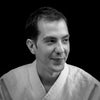
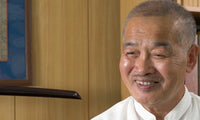
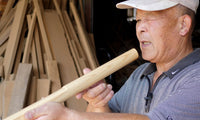
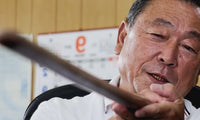
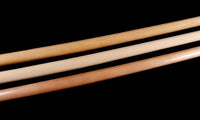

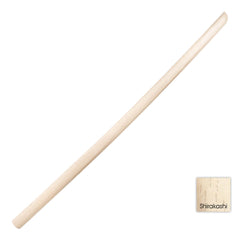
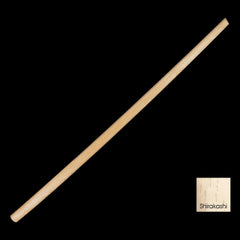
![Katori Shinto Ryu Bokken [Aramaki Model] - Classic Wood - White Oak](http://www.seidoshop.com/cdn/shop/files/Katori-Shinto-Ryu-01-en_240x240.progressive.jpg?v=1701410120)
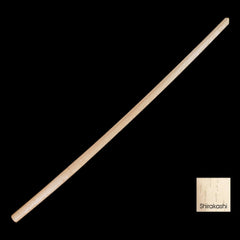
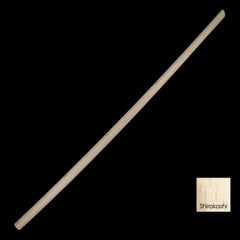
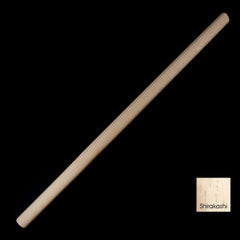
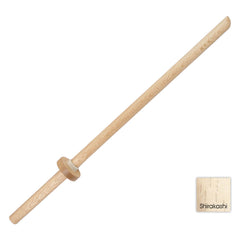
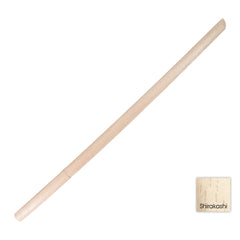
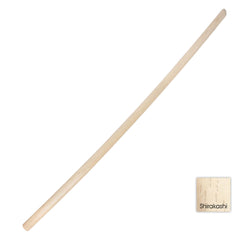
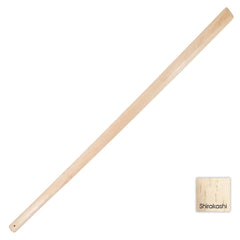
6 comments - The choice of a specific Bokken for Aikido
Saito Sensei always placed a lot of emphasis on safety during practice, particularly during partner practice. The fact that this bokuto model does not have kissaki is a reflection of this consideration in relation to kumitachi, to prevent accidental thrusts to the face or neck.
Wow, OK, I was meaning to understand the reason behind the wide variety of bokken proposed. That explanation, like most things related to martial arts, was a lot deeper than I expected.
I really enjoy the examples from a variety of people.
On a general note, thanks for your articles, they are well written and very informative.
In reply to Francois.
Thank you very much Francois !
Some years ago. Gakku Homma, one of the last uchideshi of Osensei told us in a seminar that Iwama bokkens were shaped to be used as field labor tools due to the restrictions impised by the occupation forces after WW2.
In reply to Rodrigo Rosa.
Thank you very much for your comment.
It is very unlikely that the Iwama Bokken was shaped due to this reason because it precedes the post war occupation.
It is possible that weapons were temporarily modified during that time, but we have no material evidence to affirm that.
Thank you for this expansive article! Great perspective for an inexperienced aikidoka.